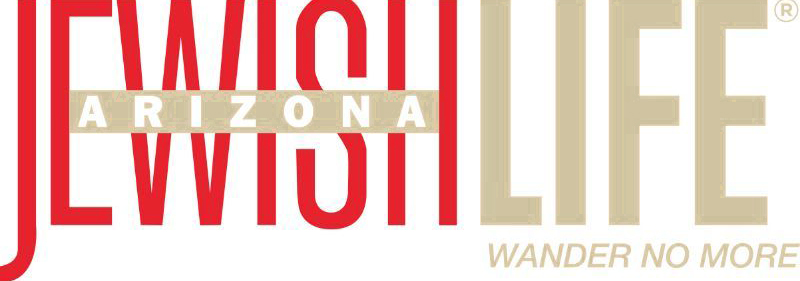Spring training, February 1971, Francisco Grande Resort, Casa Grande, AZ:
Steven Michael Stone, 23, 5 foot, 91⁄4 inches, 182 pounds, a Jewish kid from South Euclid, OH, is throwing batting practice to Willie “Say Hey” Mays – for many fans the greatest player in baseball history.
The hardest throwing pitcher from the Giants’ farm system and eventual CY Young award winner, Stone, early in spring season, throws Mays a fast ball down the center of the plate. And another. “After about 10 pitches, Dick Dietz, who is catching, comes out to the mound with his mask up over his head,” Stone recalls. “‘We have a kind of a tradition around here,’ he tells me. ‘Everyone just lays the ball in to Willie early in spring training. That way he can hit it out of the park, and all the writers can say that Willie is ready right from the start of the season.’
“Well, I told Dietz, in colorful baseball language, that Willie had better be ready for the gas because I wasn’t letting up,” he continues. “Dietz looked at me to see if I was joking or not. I wasn’t. I had thrown for two months before spring training to prepare for this opportunity, and I was ready.” The next fast ball, Mays popped up – a sign that he was picking up the ball too late to hit it for distance, one of his many stellar career signatures. Stone looked at Mays and Dietz.
The great centerfielder turned to Dietz and asked, not happily: “Who is that guy?” He threw his bat against the batting cage. “He never took batting practice off me again,” Stone says. “You see, I knew I had to establish some things really early, and one was that I wanted to be there and deserved to be there,” Stone says. “I wasn’t a belligerent player, but frankly, I didn’t care about Willie’s spring training performance because Willie Mays was going to make the team. But I was a nonroster player who had to make an impression.” Impressively, he did. He joined a very, very good squad with two other Hall of Famers, Willie McCovey and Gaylord Perry. Add the speedy, and powerful, Bobby Bonds, who with son Barry, later a Giants player as well, are the best father-and-son duo in baseball history.
While they were both playing for the Giants, Bobby Bonds had confronted Stone a number of times in an unfriendly way, so Stone talked about this to their teammate and Bonds’ friend Gary Maddox, who later played for the Philadelphia Phillies. “Your people are Jewish, right,’ Maddox asked me, and I nodded,” Stone says. “‘You’re the ones who own all the ghettos and don’t fix them up?” Stone replied to Maddox: “‘You’re black, aren’t you?’” And Maddox nodded. “‘You’re the ones who are lazy and shiftless and eat watermelon all day?’”
Maddox, who, after his playing days, went on to work at the Federal Reserve Bank of Philadelphia, got the point. Stone con- tinued: “You’re a smart guy, Gary. You give me a stereotype, and I give one back to you, and it’s offensive. You’re not naive enough to think that only Jews own tenements? Well, people who don’t fix tenements up are bad people, and it doesn’t matter who they are or what group they are from.”
Later, in 1972, Bonds asked Stone to room with him, which didn’t work out, but, when he was a hitting coach in Cleveland, after retiring from playing, Bonds would always come up from the field to meet Stone’s parents, who regularly attended Indians games. “Bobby figured it out late in life,” Stone says. “Some people never do.”
WINDUP
“I look at being Jewish not so much as a religion but as a way of life,” says Stone, now an announcer for the Chicago White Sox. As a result, he spends half of the year in Chicago and the other half, to follow spring training, in Scottsdale, where he has three dogs: two Rhodesian ridgebacks, Larry and Layla, and Sanders, a greyhound who greets Stone and everyone with a chance to throw him tennis balls.
For one, Stone had hard-working, supportive parents – traits nurtured in the Jewish community. “When I speak to parents and temple groups, I stress how important it is to support children in whatever endeavor they want, even if it isn’t baseball,” he says. “My parents loved baseball, but they would have supported me in anything.”
Regardless of his ultimate direction, the first stop was college: “That wasn’t debatable. No one in our family had gone to college,” Stone says. “My father changed jukebox records, and my mother worked in a cocktail bar.” Although his school grades were not outstanding, his aptitude tests were excellent – and he had excelled, too, in sports at Charles F. Brush High School in Lyndhurst, OH – baseball, especially, for Coach Jim Humpal, who encouraged him.
His heroes were the legendary Sandy Koufax, for three years in the early ’60s arguably the greatest pitcher in baseball history, and Al Rosen, the “Hebrew Hammer,” who played 10 seasons as a third baseman in the ’40s and ’50s and was the American League MVP in 1954 for a superb Cleveland Indians team that also starred fireballer Bob Feller and Larry Doby, who in 1947 had become the first black player in the American League.
“I even dated Al’s daughter for a while, which was quite interesting,” he says of Rosen, also a boxer, from a time when sons of Jewish immigrants found success in the ring. He met any anti-Semitism with a challenge for a fight, which few slur-tossers wisely did not accept.
At Kent State University, Stone played alongside the feisty Thurman Munson, the great catcher who died in a plane crash in August 1979 after becoming the only Yankee to win both Rookie of the Year and Most Valuable Player honors. While pursuing his baseball career in the minor leagues with the Giants, Stone graduated from college with a teaching degree in history and government – fulfilling the family’s dream for his college education.
PITCH
Stone completed 12 years in the major leagues, following the Giants with employment by the Chicago Cubs, Chicago White Sox and Baltimore Orioles, the last under Hall of Fame manager Earl Weaver. Of course, 1980 is Steve Stone’s year: He pitched to a league-leading 25-7 record, winning both the Cy Young and Sporting News Pitcher of the Year awards. Named for the great pitcher, the Cy Young is awarded annually to the best pitcher in both the American and National leagues, as voted by members of the Baseball Writers Association of America. This success was preparation, too, not coincidence.
To that point in his professional career, he tried not to lose, he said at the time. “My mental gymnastics changed in 1979,” he recalls. “Before, even though I had some success, I felt after a win, well, maybe tomorrow a loss. But I suspected at this time that there was a better pitcher in me and I had to change things. I realized that nothing you did yesterday will affect what you do today.” He used self-hypnosis, imagery and worked on a positive mental attitude – a system that he describes in his first book, Teach Yourself to Win.
“I couldn’t change my size, I couldn’t change my talent,” he recalls. “The only thing I could change was my mind. My philosophy from then on, even against the great hitters: You might be going to the Hall of Fame, but not today.”
RADIO/TELEVISION DELIVERY
“I believe everyone has the same amount of luck and opportunity,” Stone says, “but you don’t want to be at the Dunkin’ Donuts when it arrives. You have to be prepared.” So, when his pitching career ended, he wasn’t dunking crullers. In 1982, just four days after retiring, he was in the broadcast booth, eventually working with people such as Hall of Famer Don Drysdale and funny color man Bob Uecker. In fact, for one ABC Monday Night Baseball game, three Jews collaborated for the play-by-play and commentary at historic Fenway Park in Boston: Stone, Al Michaels and Howard Cosell.
Then, in 1983 he became a WGN commentator for Chicago Cubs games, working with Hall of Fame announcer, Harry Caray, about whom he co-authored a memoir, Where’s Harry? He later worked with Caray’s son, Chip. Stone followed this in 2008 with radio and then television broadcasts for the White Sox.
“There are few analysts that can dissect every facet of the game of baseball and break each down so the viewer can understand the intricacies beyond what is at the surface,” says Brooks Boyer, senior vice president of sales and marketing for the Chicago White Sox.
“Steve prepares for every broadcast, understanding his number-one goal is to teach the game to our fans and the viewing audience. His knack for understanding ‘what comes next,’ coupled with his years of experience playing the game at the highest level, broadcasting the game and being a student of the game, all provides White Sox fans a unique perspective each broadcast.”
Says Stone: “As a player, I faced the best of the best – Aaron, Rose, Bench, Morgan, Perez, Jackson, Billy Williams – and they were much better than I was. But I learned that I couldn’t allow anyone to out-think me, to prepare more, to want it more – or work more.”n
David M. Brown (azwriter.com) is a Valley-based freelancer.





